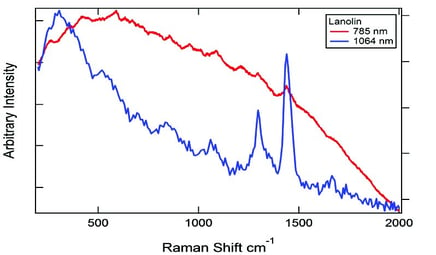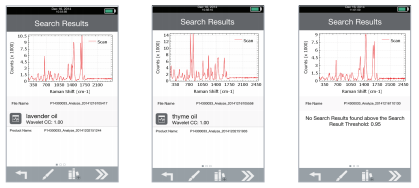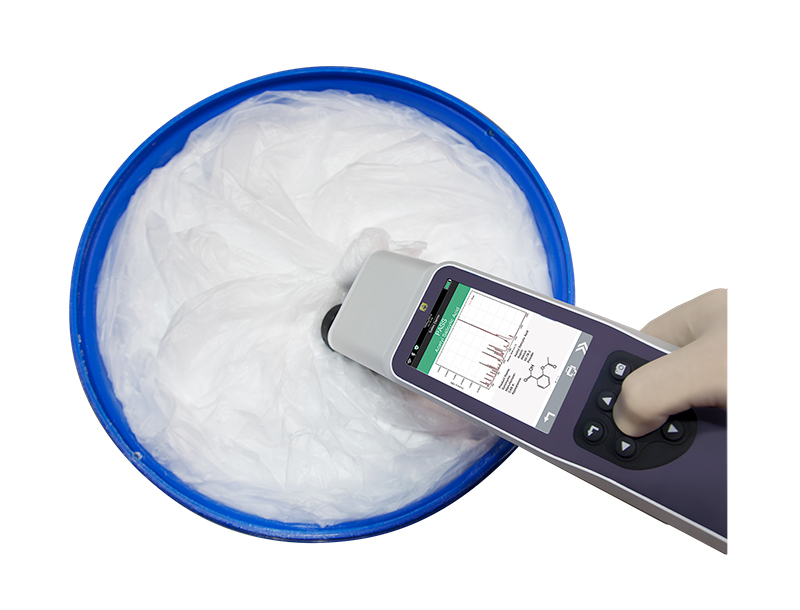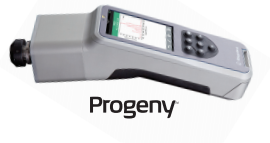REGULATION OF RAW MATERIAL IDENTIFICATION IN COSMETICS
The safety of cosmetic products is an important issue for manufacturers, suppliers, and regulators. The EC Cosmetic regulation 1233/2009 of the European parliament and council requires all cosmetic products in the Eu market to be manufactured according to good manufacturing practices (GMP) described by the ISO 22716 Standard.
In addition, the International Cooperation on Cosmetic Regulation (ICCR) – a joint effort by the U.S., EU, Japan, and Canada – agreed to implement ISO 22716 in their respective regions, wherever possible.
MINIMIZE FLUORESCENCE – MAXIMIZE EFFICIENCY
Fluorescence interference is a common problem when identifying raw materials or colored packaging materials with handheld Raman analyzers using a 785 nm laser excitation source. With a higher excitation wavelength of 1064 nm, signal blocking fluorescence is minimized. Figure 1 shows the advantage of using a handheld Rigaku Progeny 1064 nm analyzer over a 785 nm handheld analyzer for the identification of lanolin.

Figure 1. Results of lanolin using 785 nm and 1064 nm Raman laser excitation.
CASE STUDY OF ESSENTIAL OILS AND ADULTERATED ESSENTIAL OILS
Twelve different types of commercially available essential oils were
measured:
• anise • nutmeg
• basil • orange
• geranium • patchouli
• ginger • peppermint
• lavender • sage
• lemon • thyme
Forty-five spectra of each oil were collected over three different days and each oil was correctly identified by Progeny in every measurement (see Figures 2-4).

Figures 2-4. Raman spectrum of lavender, thyme and basil oil adulterated with soybean oil
analyzed with a Progeny 1064 nm handheld analyzer
We also investigated a sample of basil oil adulterated with soybean oil (20% soybean oil). The analysis was able to distinguish between the pure basil oil and the adulterated basil oil (see Figure 4).
CONCLUSION
These analyses demonstrate the analytical advantages of using handheld Raman 1064 nm laser excitation vs. 785 nm laser excitation for the identification of oils used in the manufacturing of cosmetics. Manufacturers can now perform lab-quality analysis at any point during their production process, enabling stronger quality programs.
RECOMMENDED PRODUCT
Progeny Handheld 1064 nm Raman


